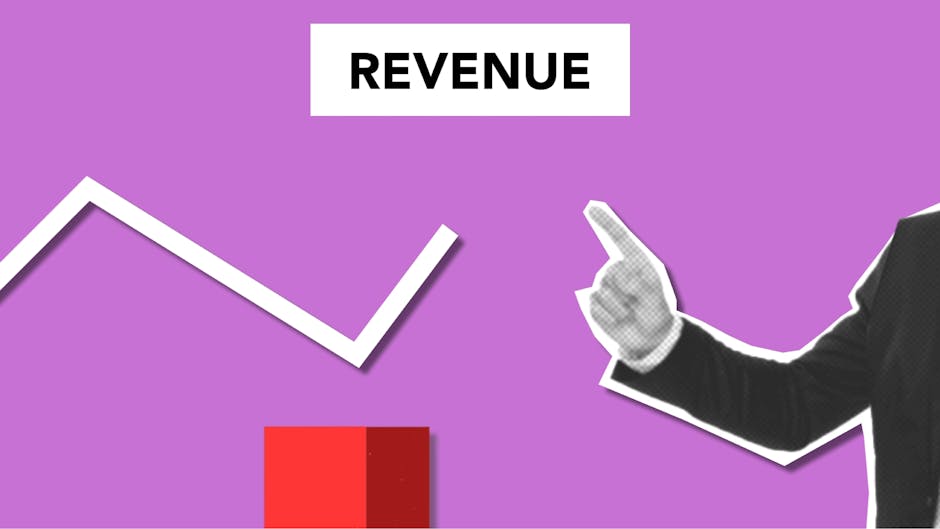Maximizing ROI with AI Marketing Automation
Rysa AI Team
Learn how to boost your marketing ROI using AI-driven marketing automation strategies tailored for digital marketers and SEO specialists. This in-depth guide covers the fundamentals, pain points, implementation steps, SMB case snapshots, and measurement tactics so you can confidently deploy AI across your marketing programs.

Who this guide is for
- Digital marketers and content leaders at small to medium-sized businesses (SMBs)
- SEO specialists and content strategists responsible for organic growth
- Marketing operations and demand gen teams ready to scale without scaling headcount
As marketers face rising acquisition costs, complex buyer journeys, and higher content velocity demands, AI marketing automation is fast becoming a competitive necessity. When planned and governed well, AI can deliver faster production, smarter personalization, and more predictable ROI.
Understanding AI Marketing Automation
Definition and scope
AI marketing automation is the application of artificial intelligence and automation to streamline and optimize marketing workflows, decisions, and outcomes. It goes beyond rule-based marketing automation by adding predictive, generative, and adaptive capabilities that learn from data and improve over time.
Common use cases include:
- Content planning and generation for SEO and demand gen
- Keyword and topic clustering, entity extraction, and brief generation
- Predictive lead scoring and propensity modeling
- Behavioral segmentation and journey orchestration
- Automated A/B/n testing and optimization
- Performance anomaly detection and budget reallocation
- Personalization of emails, landing pages, and ads at scale
Unlike traditional marketing automation (e.g., scheduling emails or triggering workflows based on rules), AI-powered systems infer intent, predict next-best-actions, generate on-brand copy, and optimize assets using feedback loops.
Many teams now visualize these AI-augmented workflows and performance insights through live analytics dashboards to drive quicker, data-informed decisions.

Use these dashboards to spot trends, prioritize fixes, and iterate on content and campaigns faster.
Bold move: Want to see how Rysa AI turns SERP intent and entity coverage into actionable briefs and dashboards? Book a 15-minute demo with the Rysa AI Team.
Core technologies involved
- Natural language processing (NLP) and large language models (LLMs): Generate content, summarize research, extract entities, and align to brand voice and tone.
- Retrieval-augmented generation (RAG): Grounds LLM outputs in your approved knowledge base, assets, and product facts to increase accuracy.
- Predictive analytics and machine learning: Forecast demand, score leads, detect churn risk, and optimize budget allocation.
- Recommendation engines: Suggest topics, internal links, content updates, and product recommendations dynamically.
- Computer vision: Classify and tag visuals, create alternative image text, and analyze creative performance.
- Customer data platforms (CDPs): Unify first-party data for identity resolution, consent enforcement, and audience building.
- MLOps and governance: Monitor model performance, drift, compliance, and bias; manage versioning and approvals.
If you're new to how these components work together in practice, this overview breaks down AI marketing automation at a glance—from LLM-powered content to predictive orchestration—and shows real examples of workflows you can adopt.
As you watch, map the concepts to your stack; the next section on current market trends highlights how these capabilities are showing up in marketers’ day-to-day.Current market trends
- AI copilots in daily workflows: Marketers are adopting AI as a copilot for briefs, outlines, and repurposing—reducing repetitive, low-leverage tasks.
- Personalization with privacy: First-party data stewardship and consent-centric personalization are becoming the default, as privacy regulations evolve.
- Content velocity and quality controls: Teams seek to scale production without sacrificing E-E-A-T, brand voice, or factual accuracy.
- Convergence of martech stacks: Consolidation continues as platforms embed AI natively to reduce integration overhead.
- KPIs shifting to business impact: Marketers focus measurement on pipeline, CAC/LTV, and incremental impact rather than vanity metrics.
Further reading:
- Adobe: Benefits of marketing automation (efficiency, alignment, ROI) — https://business.adobe.com/blog/basics/marketing-automation-benefits
- Firework: Marketing automation statistics roundup — https://firework.com/blog/marketing-automation-statistics
- HubSpot: AI trends for marketers — https://offers.hubspot.com/ai-marketing
Identifying Key Pain Points in Marketing
Resource allocation issues
- Limited headcount vs. rising content and channel demands
- Fragmented point tools increasing tech spend and operational overhead
- Difficult prioritization across SEO, lifecycle, paid, and product marketing
Where AI helps:
- Prioritize topics by business intent and opportunity
- Automate repetitive production tasks so strategists focus on high-leverage work
- Consolidate workflows to reduce redundant tools and manual handoffs
Time management challenges
- Content creation cycles are slow: brief → draft → SMEs → edits → SEO → publish
- Manual keyword research and clustering eats hours each week
- Reactive work (ad hoc requests, last-minute edits) interrupts strategic projects
Where AI helps:
- Auto-generate research briefs with entities, questions, and internal links
- Create first drafts and variants aligned to brand voice and SERP intent
- Auto-summarize subject matter expert interviews and repurpose transcripts

Personalization at scale
- One-to-many campaigns underperform vs. tailored experiences
- Manual segmentation and content mapping don’t scale
- Multi-language and multi-region launches are time- and cost-intensive
Where AI helps:
- Dynamic audience clustering and journey orchestration
- Automated copy variations by persona, lifecycle stage, and channel
- Translation plus transcreation for local nuance and SEO
Implementing AI for Enhanced ROI
This section provides a practical, step-by-step path to integrate AI into your stack and culture—without compromising brand standards or data integrity.
Step 1: Assess your current tech stack
Run a 360-degree audit:
- Goals and use cases: What business outcomes do you need? (e.g., increase organic pipeline by 30%, reduce content cost per article by 40%)
- Current tools and overlaps: CMS, CRM, MAP, SEO tools, analytics, DAM, chat, ad platforms
- Data readiness: Data quality, first-party data coverage, consent management, identity resolution
- Integrations: APIs, webhooks, CDP, reverse ETL, warehouse (e.g., BigQuery, Snowflake)
- Security and compliance: PII handling, data residency, RBAC, SOC 2/ISO, GDPR/CCPA compliance
- Team skills and bandwidth: Who will own models, prompts, QA, and reporting?
Deliverables:
- A prioritized “AI opportunities” list with estimated impact and effort
- A consolidation plan to retire redundant tools
- A governance draft that defines data, model, and content approvals
Step 2: Choose the right AI tools
Selection criteria for SMBs:
- Clear ROI for core use cases (content generation, SEO briefs, optimization)
- Guardrails for brand voice, tone, and factual grounding (e.g., RAG over your corpus)
- Human-in-the-loop workflows (draft → review → approve) with audit trails
- SEO-aware capabilities: topic clustering, SERP intent alignment, internal linking, schema suggestions
- Native integrations with CMS/CRM/MAP, and export to GA4/GSC/BI tools
- Transparent pricing that scales with your usage and team size
- Security posture: encryption, SSO, RBAC, data isolation, compliance reports
Where Rysa AI fits:
- Rysa AI is an AI content automation platform focused on SEO content generation for SMB teams. It helps you:
- Generate research-backed briefs and outlines aligned to search intent
- Produce on-brand drafts with entity coverage and internal link suggestions
- Scale programmatic and long-form content while preserving editorial quality
- Monitor content performance and identify refresh opportunities
Tip: Favor platforms that give you both speed (generation) and control (governance, brand voice, fact grounding), not just one or the other.
Selecting tools with clear dashboards and governance guardrails helps teams move fast without losing control or visibility.
Quick check: Curious how Rysa AI maps to your CMS, CRM, and analytics? Book a personalized Rysa AI demo to see a capability walkthrough tailored to your stack.
Platform comparison at a glance
| Capability | Point AI writer | General-purpose AI copilot | RAG-governed SEO content platform (e.g., Rysa AI) |
|---|---|---|---|
| Brief generation with SERP intent and PAA questions | Partial | Partial | Yes |
| Entity and topical coverage scoring | No | Partial | Yes |
| Brand voice guardrails and taboo list enforcement | Partial | Partial | Yes |
| Fact grounding with approved sources (RAG) | No | Partial | Yes |
| Human-in-the-loop approvals and audit trails | No | Partial | Yes |
| Internal link targets and anchor suggestions | No | Partial | Yes |
| Schema and on-page SEO suggestions | No | Partial | Yes |
| Programmatic content support (templates, variables) | No | Partial | Yes |
| Native integrations (CMS/CRM/MAP; GA4/GSC export) | Limited | Partial | Yes |
| Performance analytics (refresh opportunities, decay) | No | Partial | Yes |
| Security posture (SSO, RBAC, data isolation) | Limited | Partial | Yes |
| Pricing transparency for SMB teams | Varies | Varies | Yes |
Use this table as a checklist when shortlisting vendors; capabilities vary by provider.

Make sure your shortlist shows exactly how drafts, approvals, and SEO checks appear in-app so stakeholders can align on workflow fit.
Step 3: Train your team for AI integration
Focus on capability building, not just tool training:
- Roles: Define who drafts, reviews, fact-checks, and publishes. Assign an AI operations owner.
- Prompting standards: Use a simple framework like TAPS (Topic, Audience, Purpose, Style) for consistency.
- Brand voice guardrails: Document voice, tone, taboo phrases, and claims policy. Store as reusable system prompts.
- Fact integrity: Connect approved sources and require citations for claims; avoid unsupported statistics.
- Editorial rubric: Readability targets, entity coverage, unique value vs. SERP, and E-E-A-T criteria.
- Feedback loops: Track edits and publish reasons so models/prompts improve over time.
Training lands best when it’s hands-on and collaborative, with shared ownership of prompts, QA, and publishing checkpoints.

Use shared boards and playbooks to codify responsibilities, timelines, and sign-offs as the team scales AI usage.
Example prompting checklist:
- Include target persona, stage, and problem
- Specify SERP intent (informational, commercial, transactional)
- Provide internal links and priority anchor text
- Add product constraints and claim approvals
- Request variants for email, social, and landing pages
Step 4: Pilot, measure, scale
Pilot design:
- Pick 1–2 high-impact workflows (e.g., SEO blogs + content refreshes)
- Define success metrics (e.g., time-to-first-draft, editorial revision count, cost per article)
- Establish baselines using 4–8 weeks of historical data
- Run for 4–6 weeks and compare to baseline
Scale plan:
- Roll out to adjacent workflows (email nurturing, landing pages, translations)
- Expand to new personas and regions with localized prompts
- Retire redundant tools and centralize on fewer platforms
- Document playbooks and provide ongoing training
Step 5: Governance and risk management
- Content governance: Approval workflows, audit trails, and claim substantiation
- Model governance: Monitor output quality, bias, and drift; version prompts and templates
- Data governance: Consent enforcement, PII minimization, and data retention policies
- Compliance: GDPR/CCPA alignment, opt-out flows, cookie consent; review with legal
- Incident response: Clear path to pause automation and remediate issues
A practical 90-day roadmap
- Days 1–15: Audit stack, choose 1–2 AI tools, define use cases and KPIs, create governance draft
- Days 16–45: Train team, build prompts/templates, integrate CMS/CRM, run pilot
- Days 46–75: Evaluate results vs. baseline, iterate prompts and workflows, expand to second workflow
- Days 76–90: Document playbooks, deprecate overlaps, formalize reporting, plan next-quarter goals
Case Studies: Success Stories from SMBs
The following anonymized composites reflect patterns we see across SMBs adopting AI marketing automation. Results will vary based on market, baseline, and execution.
Case study 1 overview: DTC ecommerce brand accelerates SEO growth
Context:
- 12-person marketing team; strong social presence but uneven SEO performance
- Content bottleneck at brief creation and editorial review
- International expansion required multi-language content
Approach:
- Implemented AI-driven briefs with entity coverage and SERP gap analysis
- Generated first drafts for long-form SEO pages and collection guides
- Launched a content refresh program targeting underperforming posts
- Translated top pages and adapted for local search nuances
For ecommerce teams, the content experience lives where buying happens—and your AI strategy should reflect that reality.

Ground SEO pages in shoppers’ real browsing journeys to increase relevance and conversion potential.
Outcomes observed over two quarters:
- Material reduction in time-to-first-draft and editorial revisions
- Noticeable expansion in non-brand organic sessions and share of voice in priority categories
- Improved consistency of internal linking and topical coverage across clusters
- Faster international rollout due to translation + transcreation workflows
Lessons learned:
- Brief quality determines draft quality—invest in prompt templates and source grounding
- Refreshing decayed content can deliver quicker wins than net-new production
- Local nuances matter: literal translation underperforms vs. transcreation aligned to local SERP intent
Case study 2 overview: B2B SaaS SMB scales thought leadership without scaling headcount
Context:
- 8-person demand gen and content team; complex product in a regulated niche
- Sales needed content for late-stage objections and industry-specific use cases
- Internal SMEs were time-constrained
Approach:
- Used AI to synthesize SME interviews and product docs into outlines and drafts
- Built a library of persona- and stage-specific landing pages and emails
- Set up a quarterly content audit to identify pages for optimization and consolidation
Outcomes observed within one quarter:
- Significant reduction in production time for long-form assets and nurture sequences
- Better alignment between SEO content and sales enablement collateral
- Clearer measurement of impact via CRM integration and content-influenced pipeline tracking
Lessons learned:
- Human-in-the-loop reviews are non-negotiable for regulated claims
- Connecting content performance to pipeline metrics increases organizational buy-in
- Maintaining a single source of truth for approved facts reduces revisions and risk
Measuring the Impact of AI on Your Marketing Goals
To maximize ROI, measurement must be intentional, multi-layered, and business-aligned.
Dashboards bring KPIs into a single view so you can track progress, cut through noise, and rally stakeholders.

Align these views with your executive scorecards to keep funding tied to visible business impact.
Key performance indicators
Production efficiency:
- Time-to-first-draft and time-to-publish
- Content throughput per month and per headcount
- Editorial revision ratio (major vs. minor edits)
- Cost per asset (article, landing page, email sequence)
SEO performance:
- Rankings for target keywords and clusters
- Organic sessions, non-brand share, and click-through rates
- Topical authority coverage vs. competitors
- Content decay detection and refresh lift
Engagement and conversion:
- Scroll depth, time on page, and bounce rate
- Returning visitor ratio and subscribes/Gated content conversion
- Assisted conversions and multi-touch attribution signals
Revenue and efficiency:
- Marketing qualified leads (MQLs), sales accepted leads (SALs), and opportunities
- Pipeline and revenue influenced by organic content
- CAC and CAC payback; LTV/CAC ratio
- Team productivity metrics (output per FTE)
Quality and compliance:
- Brand voice adherence and editorial rubric scores
- Factual accuracy and citation completeness
- Accessibility checks (alt text, structure, reading level)
- Privacy and consent compliance rates
Tools for tracking progress
- Analytics: GA4 for behavior and conversions; Looker Studio or BI tools for dashboards
- Search: Google Search Console for impressions, clicks, and query coverage
- SEO platforms: Topic clustering, SERP analysis, and content gap insights
- CRM/MAP: HubSpot, Salesforce, or similar for pipeline and attribution
- Experimentation: A/B testing on titles, CTAs, and on-page modules
- AI monitoring: Output quality checks, prompt versioning, and approval logs
Where Rysa AI can help:
- Brief and draft analytics (entity coverage, internal link health)
- Content performance insights to prioritize refreshes
- Workflow reports on time saved and production throughput
Need help turning these KPIs into a GA4 + GSC dashboard? Ask the Rysa AI Team for our free dashboard template during your demo.
To translate these metrics into dashboards, this GA4-focused tutorial walks through configuring key events, setting up conversions, building reports, and reading attribution so you can prove content’s impact.
Pair these steps with the KPI set above and the optimization loop below to create a repeatable measurement system for your AI-enabled programs.Adjusting strategies based on data insights
A repeatable optimization loop:
- Diagnose: Review KPI trends by content cluster and funnel stage
- Hypothesize: Identify bottlenecks (e.g., CTR plateau, intent mismatch)
- Test: Launch controlled experiments (titles, angles, content structure)
- Measure: Use agreed lookback windows and guard against confounders
- Scale: Roll winning patterns and retire underperforming tactics
Analytical best practices:
- Establish baselines and control groups before rollout
- Attribute content impact using a combination of position-based or data-driven models
- Set minimum sample sizes to avoid false positives
- Track both leading indicators (CTR, engagement) and lagging ones (pipeline, revenue)
A simple ROI model for AI marketing automation
ROI = (Incremental value created − Total costs) ÷ Total costs
- Incremental value created:
- Revenue attributed to AI-accelerated content improvements
- Cost savings from reduced production time and tool consolidation
- Total costs:
- AI platform subscriptions and usage
- Implementation and training time
- Ongoing governance and QA
Example approach:
- Quantify hours saved per asset × hourly fully loaded cost
- Estimate incremental organic traffic from content improvements and apply your sitewide conversion and average deal value
- Include experiment learnings: even unsuccessful tests inform future wins

Practical playbooks and templates
SEO content playbook using AI
- Topic discovery and clustering
- Input: ICP, pain points, product categories
- Output: Opportunity map of clusters, parent topics, and subtopics with intent
- Brief generation
- Auto-generate briefs with:
- SERP intent analysis and People Also Ask questions
- Entity and question coverage
- Internal link targets and anchor suggestions
- Brand and product talking points with citations
- Drafting and review
- Generate drafts aligned to brief and brand voice
- Human editor reviews for angle, originality, and claim accuracy
- Add visuals, schema markup, and accessibility elements
- Publish and monitor
- Track rankings, CTR, and engagement; annotate experiments
- Detect content decay and schedule refresh cycles
- Repurpose to email, social, and sales enablement
Prompting framework (TAPS)
- Topic: “AI marketing automation for SMB SEO”
- Audience: “Digital marketers and content leads at SMBs”
- Purpose: “Educate and drive demo requests”
- Style: “Authoritative, pragmatic, brand-safe, with clear next steps”
Prompt example inputs:
- Persona: “SEO manager at a 20-person B2B SaaS”
- Pain point: “Content backlog and inconsistent briefs”
- Sources: “Approved product pages, case notes, industry reports”
- Constraints: “No unverified stats; cite sources; include internal links”
Editorial rubric checklist
- Intent match: Does content satisfy informational or commercial intent?
- E-E-A-T: Is there a unique POV, expertise, or original research?
- Entity coverage: Are key concepts thoroughly explained?
- Brand voice: Is tone consistent with style guide?
- UX: Is structure scannable with clear headings and CTAs?
- Accuracy: Are claims grounded in approved sources?
- Accessibility: Alt text, descriptive links, and readable sentences
Common pitfalls and how to avoid them
- Scaling before standards: Create guardrails (prompts, voice, approvals) before you scale production.
- Over-reliance on automation: Keep human experts in the loop for strategy and QA.
- Ignoring data foundations: Poor data quality undermines personalization and reporting.
- Vanity metrics focus: Tie outputs to pipeline, CAC, and LTV; not just impressions.
- Neglecting refreshes: Content decay is real—schedule periodic updates.
- Underestimating change management: Train teams, set expectations, and celebrate wins.
Frequently asked questions
What’s the quickest win for AI in SMB marketing?
- Start with SEO briefs and refreshes. You’ll cut production time and see measurable gains in traffic and CTR faster than net-new campaigns.
How do we maintain brand voice with AI-generated content?
- Encode your style guide into system prompts, enforce human editorial review, and ground outputs in approved assets with RAG.
What about compliance and privacy?
- Use platforms with strong security posture, respect consent and data minimization, and involve legal early to set boundaries.
How do we prove ROI to leadership?
- Establish baselines, run controlled pilots, quantify time savings and incremental pipeline, and report on both efficiency and revenue metrics.
Conclusion: Turning AI into Measurable Marketing ROI
- AI marketing automation moves beyond rule-based workflows to predictive, generative, and adaptive systems that compound value over time.
- The fastest path to impact is focused and governed: audit your stack, choose RAG-governed tools, train your team, run a tight pilot, then scale with clear standards.
- Keep humans in the loop for strategy and QA; invest in brief quality, brand guardrails, and fact grounding to protect trust and accelerate production.
- Measure what matters: connect content and campaigns to pipeline, CAC/LTV, and incremental lift via shared dashboards and a consistent optimization loop.
- Avoid common pitfalls by prioritizing data quality, refresh cycles, and change management—small process upgrades yield outsized gains.
Bottom line: SMB teams can unlock higher-quality content at greater velocity—and prove ROI—without increasing headcount. Rysa AI helps operationalize this motion for SEO-led growth with research-backed briefs, on-brand drafts, and performance insights that tie directly to business outcomes.
Your next steps
- Audit: List your top 3 marketing bottlenecks and map them to AI-enabled workflows.
- Pilot: Choose one workflow (e.g., SEO content briefs + drafts) and define success metrics.
- Govern: Set up approval workflows, brand guardrails, and data policies.
- Measure: Track efficiency and business impact from day one.
If you’re ready to scale SEO content without sacrificing quality, Rysa AI can help. As an AI content automation platform built for SMB teams, Rysa AI streamlines briefs, drafts, and performance insights so you can move faster—and measure the impact. Book a demo with the Rysa AI Team to see how it fits your stack and goals.
Final step: Get your custom SEO content ROI plan and a live walkthrough of brief-to-publish workflows—book your Rysa AI demo today.
Written by Rysa AI Team

